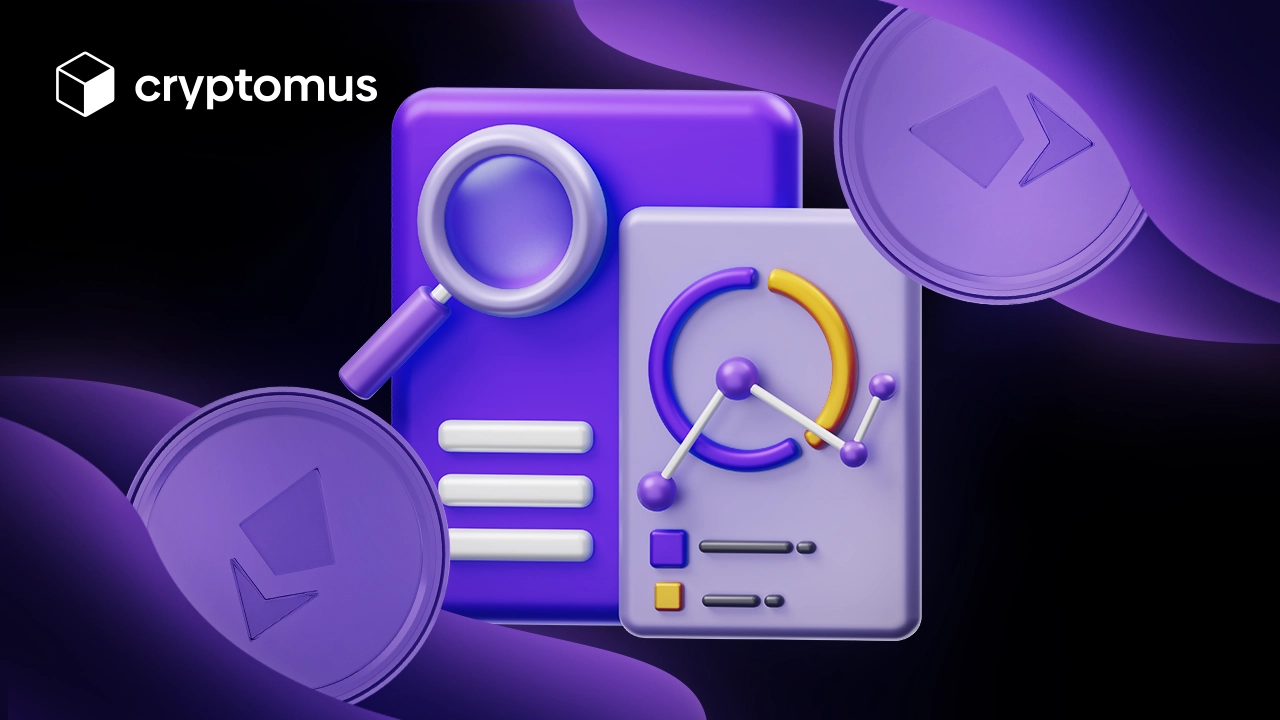How to Perform In-Depth Fundamental Analysis of Cryptocurrencies
Crypto fundamental analysis is a crucial element in crypto investing. Without it, it would be difficult to determine which cryptocurrency is suitable for investment and which is not. Today you will learn how to perform cryptocurrency fundamental analysis and discover key indicators, metrics, and tools for conducting fundamental analysis of crypto.
What is Fundamental Analysis in Crypto?
Let's face it, no one likes to lose their investment. People dislike it so much that one day they invented fundamental analysis, which helps to determine the prospects of this or that asset. In the beginning, such analysis was conducted on the stock market, but with the development of digital money, later this phenomenon decided to extend to such a sphere as the cryptocurrency market. This is how fundamental analysis for cryptocurrencies came into being.
Crypto fundamental analysis determines the assessment of the intrinsic value and potential of a cryptocurrency based on various criteria. It is done in order to understand whether the cryptocurrency of interest is overvalued or undervalued. This kind of fundamental crypto analysis helps people make the right decisions to save and increase the amount of their funds.
How to Perform Fundamental Analysis In Crypto?
In order to perform fundamental analysis in crypto, users have to consider a wide range of factors. These factors can be both quantitative and qualitative. The former refer to precise numbers and measurable characteristics. And the latter indicators are usually less clear and refer to the nature or quality of something. In the next part, we will tell you about these factors, metrics and tools that can be used for fundamental analysis on crypto.
Fundamental Analysis Indicators and Metrics and Tools
There are three types of fundamental crypto factors to consider:
- Financial Metrics;
- Project Metrics;
- Blockchain or On-chain Metrics.
Financial metrics tell us about the economic factors of cryptocurrency and include:
-
Market Capitalization: You can't go anywhere without analyzing market capitalization, because it determines the size and relative value of a cryptocurrency. And as a general rule, coins with a low market value have a better chance of growth when tokens with a high market value are often more stable.
-
Liquidity: In simple words, liquidity is how easy it is to buy and sell cryptocurrency. When determining this metric, many people prefer high liquidity as it allows for more efficient trading. The indicators for this parameter are the bid-ask spread.
Project indicators, unlike financial indicators, are qualitative. They help users evaluate the quality of the developed project and understand the success potential of the cryptocurrency. These include:
-
The Whitepaper: A white paper is a document developed by the developers of a cryptocurrency that outlines the project, from its purpose, technology, and use cases. Such a document helps to find answers to many questions about cryptocurrency.
-
The Team and Competitors: An open history of a developer or team can inspire more trust from users. After all, seeing how long a project has existed and with the help of what technologies it achieved success can help analyze the prospects of their product. But don't forget about your competitors. Stronger competitors can determine whether the token you choose will last or not and can help highlight both the strengths and weaknesses of the cryptocurrency.
Blockchain metrics provide basic information about the cryptocurrency network and identify factors related to the technologies and processes taking place within the asset. On-chain crypto fundamentals metrics include:
-
Hash Rate: This is the total computing power of the network and devices on which cryptocurrency is mined.
-
Number of Active Addresses and Transactions: On-chain tools measure the number of unique addresses and transactions over a given period to provide insight into the level of user engagement and adoption of the blockchain network.
-
Transaction Value: This indicator will show how much was transferred over a certain period of time. And as a rule, the higher the amount, the better.
We have listed the main metrics that you should pay attention to when making fundamental analysis in cryptocurrency. The more time you spend studying all the indicators, the better your analysis will be, which will help determine the prospects of your investment.

Advantages of Fundamental Analysis of Cryptocurrencies
It is important to conduct fundamental analysis of cryptocurrency as it has many advantages:
-
Fundamental analysis for crypto allows traders to assess the potential and future of a crypto asset beyond its current market price.
-
By analyzing all the metrics listed above traders can identify long-term investment opportunities on working with crypto.
-
Fundamental analysis cryptocurrencies helps traders make informed decisions, considering factors such as financial, project and blockchain metrics.
Tips for Fundamental Analysis of Cryptocurrencies
We have told you about the best crypto fundamental analysis tools, now it’s time to summarize and learn about tips for conducting fundamentals of cryptocurrency:
-
Look at on-chain metrics;
-
Review the white paper;
-
Find info about the team behind the project and the competitors;
-
Include fundamental analysis in crypto decision-making process to reduce the risks associated with crypto investment;
-
Don’t regard fundamental analysis as the main determining factor when making investment decisions, because it can be challenging to predict future price movements based only on fundamental indicators alone;
-
Research reputation of crypto.
Today we walked you through fundamental cryptocurrency analysis and the metrics you can use to ensure your crypto investing is successful. Thanks for reading. Follow our updates to always keep abreast of news in the world of cryptocurrencies!
Rate the article

comments
0
You must be logged in to post a comment